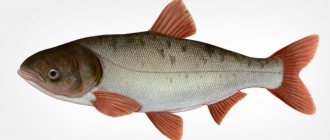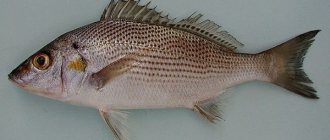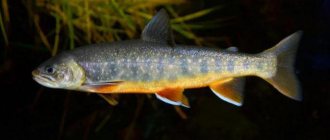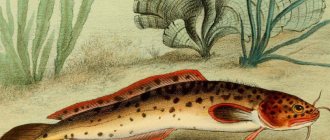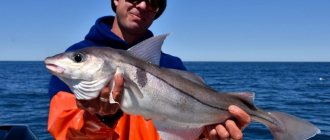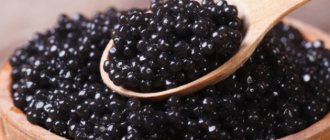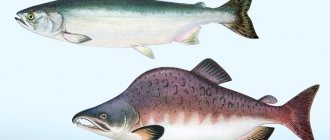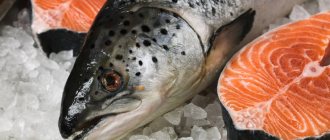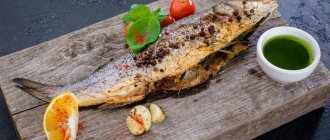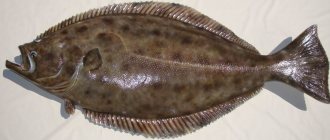White fish is a fish of the salmon family, and such a statement may seem strange to many people who have never tried or seen this fish: after all, everyone knows that salmon is a red fish, or at least pink - but there is no mistake here. We can consider that this fish is an interesting exception, and it lives only in our country - or rather, in Russia and Kazakhstan, because it is found only in the Caspian Sea and in the lower reaches of the Volga. True, there is a subspecies of whitefish called nelma, and this nelma is found in northern and Siberian rivers: Pechora, Northern Dvina, Ob, Irtysh, Lena, etc. - whitefish always lays eggs in rivers, like other types of salmon.
Appearance
The white fish is large, more than a meter long and weighing about twenty kilograms. It has a silver color, which turns into dark blue on the back, and silvery-white on the belly. It feeds on small fish such as gobies, roach, and herring. It is ready for spawning already in the seventh year of life.
What does white fish look like? The photo below will help readers get at least some idea about this inhabitant of sea waters.
Appearance and subspecies
The white fish (Stenodus leucichthys) is a semi-anadromous fish species of the whitefish subfamily of the salmon family (Salmonidae).
In this species, two subspecies are distinguished: white fish (Stenodus leucichthys leucichthys) and nelma (Stenodus leucichthys nelma) .
Reaches a length of 130 cm and a weight of 14 kg. Sexual dimorphism is weakly expressed, the male is inferior in size to the female. The lower jaw is slightly longer than the upper; the upper reaches the vertical of the anterior edge of the eye. The body is elongated, laterally compressed. The color of the belly and sides is silver, the back is brownish-blue, the dorsal and caudal fins are brownish-gray, the rest are gray.
Whitefish - what kind of fish is it?
Whitefish is a large fish with very tender, tasty meat. It can grow up to 1.5 m in length. The maximum weight is more than 14 kg.
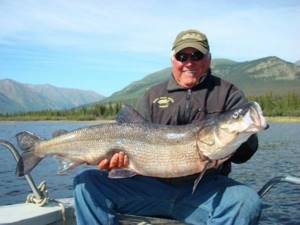
It lives in the Caspian basin, in Siberian reservoirs, and in the waters of the Volga. Currently, white fish are being actively released into artificial reservoirs in order to maintain its population, despite active poaching.
Buying fish today is not easy. It is an expensive delicacy that cannot be found in regular supermarkets. It is mainly prepared by the wives of fishermen in the eastern part of Russia, where whitefish can be caught in one of the many reservoirs.
Life cycle of the whitefish
Spawning is believed to occur in late summer or early fall, but until now there have been no direct observations of the mating behavior of salmon or descriptions of its spawning grounds. It is assumed that each individual spawns once every 2-4 years. In coastal areas, the whitefish lives in the sea (ocean), and uses freshwater rivers for reproduction. White salmon, which live in inland lakes, remain in fresh water all their lives and spawn in tributaries.
The young probably remain in spawning rivers for at least 2 years, after which they descend into a large body of water. The fish reaches sexual maturity at the age of about 7 years, and usually lives no more than 12 years. However, Siberian researchers recorded an individual who was 21 years old. An adult whitefish is very large. The average size ranges from 45 to 75 cm, and one specimen caught at the mouth of the Mackenzie River reached 1.5 m in length and weighed more than 28 kg.
Whitefish is also known in our country as nelma, and in other countries it is called sheefish, inconnu or connie
The size of nelma is determined by its food. Adults feed on small fish. These are mainly other whitefish, but the diet may include pike, stickleback, gudgeon, arctic lamprey and sometimes even other white fish. The young feed on insect larvae and planktonic crustaceans. Most likely, the transition to a fish diet occurs when the whitefish migrates to a large body of water to begin the adult phase of its life. By this point, she is usually so large that she may not be afraid of other predators. However, young salmon are readily eaten by older ones, not to mention such predators as pike and burbot.
Value for the market, types of factory preparation
Its commercial catch is small, so developments are underway to breed whitefish in artificial conditions. Due to its nutritional value, the content of a significant amount of vitamin PP, essential fatty acids, and high calorie content, this fish ranks second after sturgeon species. Its meat is white, dense, and pleasant to the taste. In stores it can be found frozen or salted, or purchased in the form of balyk. Due to its high fat content, the meat cannot withstand long-term transportation, so fresh whitefish is not found on the shelves. What kind of fish, if not it, should be loved by doctors, in particular nutritionists? Below we will discuss the benefits of this product for the human body.
Useful properties of whitefish
This fish contains a lot of useful substances that reduce cholesterol levels in the blood. Dishes made from this fish are recommended by nutritionists, and they will also be good for people with gastrointestinal problems.
Regular consumption of whitefish will reduce the risk of heart attack, thyroid diseases, and rickets. Also, dishes made from white fish meat will help improve metabolism and remove toxins.
This fish is very useful for children.
Vitamins
Whitefish contains vitamins of various groups, and is especially rich in vitamins of the PP group.
Microelements
Whitefish contains the following microelements:
- iodine,
- nickel,
- chromium,
- zinc,
- molybdenum,
- fluorine.
Calorie content
This fish is not very high in calories. 100 grams of product contains 88 kcal, 17.5 grams of protein and 2 grams of fat. There are no carbohydrates in fish.
Where does he live?
The main habitat of this fish is considered to be the Caspian basin, but it often enters the waters of the Volga and numerous Siberian reservoirs (Lena, Irtysh, Yenisei, Ob). This representative of the fauna is found in the waters of the Urals, Northern Dvina and other rivers.
Due to poaching and uncontrolled fishing, the number of this species is decreasing every year. In order to preserve the population and increase gross income, white fish are released into artificial ponds and reservoirs.
According to statistics, in the thirties of the last century this fish was caught in tons in the Caspian Sea. In the sixties, the number decreased sharply, and a temporary fishing ban was even established. From the 60s to the 80s of the twentieth century, a total of about seventy million heads of young animals were released into the Volga, Yenisei and reservoirs in the Urals.
Irrefutable benefits for the body and nutritional value
Rich in micro- and macroelements, such as nickel, molybdenum, chromium, iodine, zinc, fluorine, chlorine, extremely healthy and satisfying fish is a dietary product that can be eaten not only by healthy people, but also by those who have digestive problems, disorders of the thyroid gland (such as hypothyroidism and endemic goiter), decreased bone density (osteoporosis, rickets in children). White fish will also be appropriate in the diet of pregnant women, because it is an excellent source of vitamins, Omega 3 and Omega 6 acids, which are so necessary in the process of forming the child’s nervous system and maintaining the resources of the mother’s body. Due to its calorie content, it is suitable for those who want to lose weight and adhere to proper nutrition. Increased cholesterol and atherosclerosis are also susceptible to this fish, because essential fatty acids regulate the level of low-density lipids (LDL and VLDL) in the blood and prevent it from increasing. With constant consumption of whitefish, the risk of developing heart attacks and strokes is reduced by strengthening the vascular wall and reducing free cholesterol fractions.
Types of culinary processing
So, white fish... What kind of fish is this: healthy, tasty, and unpretentious in preparation! Its meat is tender, fatty and tasty. It makes excellent balyk, both smoked and dried. You can salt the white fish and eat it as is, or then add it to the hodgepodge to give the dish a spicy flavor. Conventional cooking methods can also highlight the characteristics of the fish. It is good boiled and fried, stewed, smoked, baked, in its own juice, with or without a side dish, in fish soup and in fish soup, even just cut into pieces and marinated with onions.
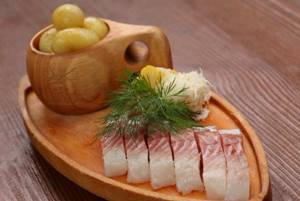
“Whitefish? What kind of fish? How to cook?” the average person will ask. We hope that after reading our article, all his doubts regarding the origin and processing of this wonderful representative of the marine fauna of Russia will disappear.
A huge advantage is that whitefish is very unpretentious in preparation. The recipes are varied, but most of them are simple and do not require lengthy or extensive preliminary preparation, special knowledge or equipment. And this, you see, is important. Among others, noteworthy are those that describe baked whitefish in the oven: with a side dish, sauce or in its own juice. So, let's look at the most interesting options.
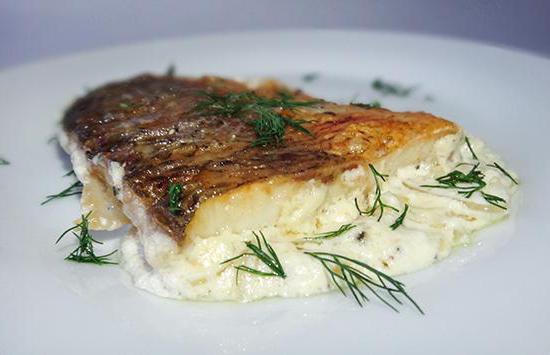
Types of white fish
Sea white fish has a specific light color. It differs from each other both in appearance and in belonging to a particular family. Therefore, the following types of white fish are distinguished.
Flatfish
It is advisable to include in this variety, for example, flounder, halibut, white fish, tilapia. This fish is characterized by an original appearance. The body shape of this fish is flattened. This fish has main bones that radiate from the back, resembling rays directed towards both sides of the ridge. Moreover, such species can grow up to two meters in length. Here are some representatives of this family.
Flounder
Scientists know more than 30 species of flounder. The body of this fish is strongly flattened on both sides. In the upper part, where the eyes are located, there is a lighter and brighter color. It prefers to be at the very bottom, and it is found in the Azov, Black, Bering, Okhotsk and Mediterranean Seas, as well as in the Atlantic Ocean. Flounder spawns in early spring, at a depth of up to 150 m. It can gain weight up to 3 kg. Due to its excellent taste, flounder is caught at high rates, which leads to a decline in its population in many seas.
Halibut (sole)
It is possible to meet this fish in the northern regions of the Pacific and Atlantic Oceans, and in the territorial waters of Russia - the Sea of Okhotsk and the Barents Sea. At the same time, halibut is divided into black, common, Asian arrowtooth and American arrowtooth.
Halibut is a predatory fish species. Its diet includes cod, flounder, pollock and all kinds of shellfish. Can live about 30 years. Halibut is a valuable commercial fish, as a result of which it is caught in huge quantities.
tilapia
This is a freshwater fish that leads a bottom-dwelling lifestyle. Inhabits water bodies located in the tropics. It is absolutely indiscriminate in food and feeds on most of the various organisms found in the reservoir.
It is grown artificially in Asian, African and North American countries. It has an excellent taste, for which it received the second name “royal perch”. Its meat is not fatty, but contains a large amount of protein.
round fish
This species includes fish such as monkfish, grouper, striped bass, red snapper, haddock, burbot, hake and cod.
These fish have a round shape, slightly thick. The eyes are located on both sides of the head. The rib bones are curved and extend down from the spine.
Cod
The cod family has a certain number of subspecies. Some species are capable of growing up to 1.7 m in length, but some of the species do not grow up to 1 m in length. This is a valuable commercial fish species, which is usually caught in the northern latitudes of the Pacific and Atlantic Oceans. The fish leads a schooling lifestyle and is highly fertile.
Individuals that have reached the age of 3-7 years and have gained a weight of about 10 kg are valued. Despite this, some specimens are able to live up to 100 years and grow to serious sizes.
Nelma
Nelma is a freshwater fish and has a silvery hue. Nelma is a large fish that can weigh about 50 kg, with a length of up to 1.5 m. Its diet includes smaller fish, such as smelt or vendace. She spawns with the arrival of autumn. By the way, this fish is quite prolific and is capable of laying up to 400 thousand eggs.
Haddock
Haddock is also a valuable commercial fish. It is caught annually in very large quantities - more than half a million tons. This valuable fish is found in the waters of the Arctic and Atlantic Oceans. It can reach a weight of 20-30 kg, but the average size of haddock caught does not exceed 15 kg.
Haddock is easy to distinguish from other fish species by its characteristic oval black spots located on both sides of the head. According to experts, this type of fish identifies its relatives precisely by the presence of these spots. Haddock is recommended by nutritionists because it has lean meat. You can buy such fish at any grocery store.
Burbot
Burbot is a fish that resembles a catfish in appearance. Like catfish, burbot is found in fresh water bodies of both Europe and Asia. At the same time, he prefers cooler water, with a temperature of no more than +25°C. Lives close to the bottom. During summer periods, when the water can warm up to temperatures above optimal, burbot hides in holes or under snags, where it waits for the cold weather to arrive. Burbot, like catfish, goes out to “hunt” only at night, so fishing at night is most preferable. Burbot can be caught using jigs, spoons or bottom gear using animal baits.
Hake
It belongs to the representatives of cod fish species, prefers salt water and not great depths. As a rule, individuals are caught that do not exceed 40-50 cm in length. At the same time, there are specimens up to 1.5 meters long. Due to the excellent taste characteristics of its meat, hake ranks first among cod fish in terms of meat value. Nutritionists recommend consuming hake, as its meat contains a sufficient amount of vitamins and very little fat.
Striped bass
This is an equally valuable commercial fish with excellent taste characteristics. Prefers to breed in the Atlantic Ocean, at low water temperatures. It can also be found in the Sea of Azov.
This is a predatory fish that sports fishermen prefer to catch, although catching perch is not so easy. It constantly moves along water horizons, so its behavior is completely unpredictable. Fishing for striped bass requires careful preparation and special detection equipment, such as a depth sounder. As far as is known, the largest specimen that was caught reached a weight of 37 kg.
Angler
This fish is also called the “European anglerfish”. This fish lives at a depth of up to 200 meters and leads a sedentary lifestyle. Can grow to large sizes. They call it that because of its large flattened head, which occupies almost 2/3 of its body.
It is found in the Atlantic Ocean, as well as in the Barents and Black Seas. Its diet consists of small fish. It is caught because of its excellent taste characteristics, despite its unattractive appearance.
Contraindications and precautions
Who is contraindicated to eat white fish?
It is safe, but those who are allergic to fish in general should not consume white fish. Fried white fish should not be eaten by those who suffer from gastritis and other gastrointestinal diseases, and too fatty fish should be avoided if there are problems with the pancreas and liver.
In addition, it is worth remembering that white fish spoils quickly, so you need to buy it in reliable stores that value their reputation, and pay attention to its smell and appearance - this applies to any frozen fish.
As for losing weight, you can even arrange a special diet for yourself with whitefish, and get rid of excess weight at a rate of 2-3 kg per week.
Article protected by copyright and related rights. When using or reprinting material, an active link to the women's website www.inmoment.ru is required!
Cooking whitefish
The meat of this fish is very tender and has a delicate taste. It is represented by white layers that are well separated. Whitefish contains a lot of fat, and therefore spoils very quickly. Therefore, fishermen most often cut it up immediately on the shore and salt or smoke it. In stores it is sold only frozen, and even then it is rare, because it is considered a northern delicacy. You should buy such fish only in trusted places to avoid undesirable consequences.
How to deliciously pickle white fish
Ingredients:
- 1.5 kg of white fish;
- 2 medium onions;
- 2 – 4 garlic cloves;
- table salt and freshly ground pepper;
- vegetable oil.
Preparation:
- Place the fish carcass in a bowl of water and remove the scales using a sharp knife. The water will prevent the latter from scattering throughout the kitchen.
- Gut the white fish and cut off its head. Remove fins and tail. Rinse the remaining part well with running cold water, both inside and outside.
- Cut the fish into two parts along the ridge. Remove all large bones. Carefully remove the ridge, helping yourself with a wide knife.
- Season the fillet well with salt and pepper.
- Finely chop the peeled garlic and onion. Pour half of it onto cling film spread on the table. Add a little salt on top.
- Place the fish layer on the resulting vegetable “pillow”. Also spread some onion and garlic on top. Cover the structure with a second layer of fish. Sprinkle with remaining vegetables.
- Wrap the workpiece in cling film.
- Place the fish carcass in the refrigerator for 48 hours.
Cut the finished treat into small pieces, sprinkle with dill, parsley and green onions, and serve.
Lifestyle and diet
The whitefish is a predator, so it feeds on everything, even its small brothers. During spawning, passing up the river, it eats many small fish. At night and early morning hours, she goes to the upper layers of water to hunt. With the help of her tail, she stuns small fish, bursting into the school.
Among the subspecies of whitefish, only the whitefish leads an exclusively predatory lifestyle. As soon as the body length of young individuals reaches 30 cm, they begin to feed on small fish. The diet of young animals consists mainly of insect larvae and planktonic crustaceans. Adults feed on fish such as perch, carp, and omul. Less often, their diet includes young pike, smelt, grayling, and never mollusks. Nelma does not feed at all from the bottom of the reservoir.
The transition to a fish diet in young animals occurs when they are ready to enter the adult phase of life. This moment occurs during the period of migration to large waters. At this time, the juveniles have already grown well, so they may not be afraid of other fish. However, “teenage” whitefish run the risk of becoming food for their adult counterparts or other predators, for example, burbot or pike.
How does the spawning period work?
At 4-5 years of life, the whitefish is ready to reproduce. Males mature 1 year earlier than females. At this time, the body length of the latter reaches 90 cm, and that of males - 80 cm. The spawning cycle of this subspecies occurs only twice with an interval of two years.
The optimal temperature for spawning should be 1-8o C. With the onset of autumn, having reached sexual maturity, individuals enter freshwater rivers. White salmon lives in coastal areas and swims into freshwater bodies to reproduce. For spawning, it mainly chooses tributaries with sandy or rocky soil and spring water. This period begins in October or November.
One female lays 100-400 thousand eggs, and during this time she does not feed. But immediately after spawning, increased nutritional replenishment begins. The larvae begin to hatch from March to May.
Cooking process
First, to decorate a ready-made dish, we peel raw beets, grate them on a coarse grater, squeeze out the juice and place them on a baking sheet in a thin layer, having previously laid them with baking paper or greased them with vegetable oil. We send the beets to dry in the oven at a temperature of 100 degrees Celsius for about an hour. Don't forget to check it so it doesn't burn.
The next step is preparing the sour cream sauce in which the fish will be cooked. To do this, finely chop the dill and garlic or pass it through a press. Then pour sour cream into a separate bowl and mix it with herbs and garlic.
Cabbage leaves must be blanched, that is, dipped in boiling water for two to three minutes. The leaves will become soft and pliable. Let them cool a little so as not to burn yourself, and give them a round shape, slightly bending them at the edges, like a cup. One serving will require two of these sheets.
Line a baking dish (baking tray with high edges, glass container) with parchment (if necessary), add cabbage. Place half of the sour cream mixture in the center. Spread it evenly on the baking sheet. Place the fish fillet on top and brush it with the rest of the sauce.
Preheat the oven to 180 degrees Celsius and place our fish there for 20 minutes. You can bake portions separately by covering the fillet on top with another sheet of parchment. Then the fish will be juicier, softer, although not as rosy as when opened.
It should be served sprinkled with pre-prepared beets. For a side dish, it is recommended to take red caviar.
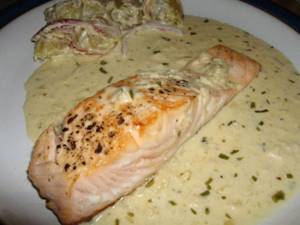
Recipe for king fish soup
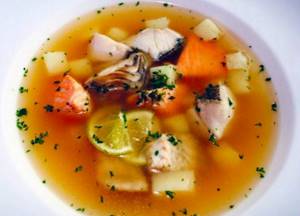
Ingredients:
- 150 g fish;
- 100 g potatoes;
- 50 g carrots;
- 50 g onion;
- 450 ml filtered water;
- salt to taste.
Preparation:
- Pour water over the fish pieces along with the bones, add salt and cook.
- After 17 - 20 minutes, add all the chopped vegetables to them.
- Salt the soup to taste.
- Cook it until the white fish and potatoes are ready.
This dish of royal fish will appeal to the youngest members of the family. In the form of seedless puree, it can be given even to children from one year old.
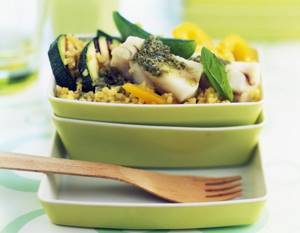
- Number of servings: 3
- Preparation time: 10 minutes
- Cooking time: 15 minutes
Sequencing
Peel the fish, remove the bones and entrails. Then cut it in half to the end and unfold it like a book, back side up. Grease a baking tray with softened butter and place the fish on it. Preheat the oven to 180-200 degrees Celsius and place the white fish there. The dish is cooked until a golden crust appears. You can check the degree of cooking with a toothpick - the meat should be juicy, but already cooked. Then pour the brine and kvass onto a baking sheet, place the pickled mushrooms on top of the fish and simmer under the lid until fully cooked. That is, another 10-15 minutes.
Before serving, the dish can be decorated with herbs and mushrooms, and topped with kvass and brine sauce. You can experiment with the serving form, for example, in a deep plate. Bon appetit!
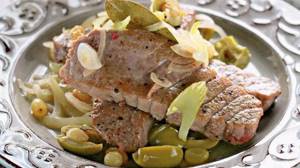
Fried whitefish
The peeled whitefish is cut into thin pieces - 1.5-2 cm, poured over them with fresh lemon juice and left for half an hour. You should fry the fish in a frying pan with a grooved or simply thick bottom: you need to pour a little olive oil into the frying pan, heat it and fry a finely chopped green chili pepper in it - before doing this, it is recommended to soak it in cold water for 20 minutes. Tarragon leaves make the fish tastier and more aromatic, so after the pepper, fry them too, and then put the fish pieces in the oil and fry on each side for 2-3 minutes.
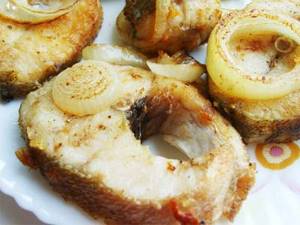
White fish cooks quickly, and you don’t need to keep it in the pan for longer - a hard crust shouldn’t form; lightly season the fried fish with salt and white pepper, remove the pan from the heat, place a thin slice of lemon on each piece of fish, and leave covered for 5-7 minutes. Serve fish prepared this way with a salad of fresh tomatoes and olives, olive oil and lemon juice. Flaky long-grain rice and fresh herbs - tarragon and parsley - are also suitable. When choosing white fish for frying, take the largest and thickest one - it will be tastier.
Stuffed white fish in the oven
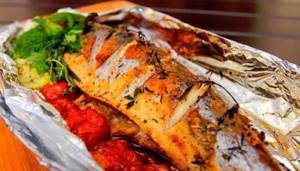
Ingredients:
- 2.5 kg of white fish;
- 1 egg;
- 1 onion;
- 250 g white bread;
- 1 tbsp. milk;
- 1 carrot;
- 3 garlic cloves;
- 2 bay leaves;
- salt and pepper.
Preparation:
- Remove scales from the fish. Remove fins, head, tail.
- Cook broth from the cut off parts with bay leaves.
- Cut the remaining portion into thick pieces. Carefully cut off the skin in a whole circle.
- Separate the fillet from the bones and pass through a meat grinder.
- Add bread soaked in milk, pieces of onion and carrot to the minced meat. Pass the mixture again with vegetables through the meat grinder.
- Season the mixture with salt and pepper. Fill the remaining pieces of leather with it.
- Place the preparations in a baking dish, pour in warm, strained and salted broth.
Bake the whitefish in this form for 60 – 70 minutes at 180°C. Serve with beet salad or any other vegetable side dish.
Few housewives (even experienced ones) know how to cook white fish and, as a result, exclude the product from their menu. Its meat is low-calorie, dietary and easily digestible. At the same time, it contains fats and other substances that are beneficial for the human body. Therefore, it is worth getting acquainted with such fish and be sure to pamper your family with dishes made from it.
Fish balyk - cook at home
There are two types of fish balyks: hung (without heat treatment) and cold smoked, which are produced within 3-4 days. To prepare a delicacy, you first need to choose the right fish.
It should be fresh , not frozen, and caught from a clean reservoir, preferably in the autumn. If these conditions are met, the dish will turn out tasty and healthy.
Everyone's favorite delicacy is usually prepared from large fish with a fat content of 5 to 30%. Suitable varieties include:
- sturgeon, weighing from 2 to 5 kg,
- salmon - from 3 to 5 kg,
- carp - from 6 kg,
- asp - 2−3 kg,
- silver carp - 8 kg,
- som - from 4 kg,
- trout - 4−5 kg,
- nelma - 3 kg,
- pike perch - from 2.5 kg,
- pike - 6 kg.
The quality of the dish will depend on what percentage of fat the fish contains. Balyk will turn out to be especially aromatic and juicy from silver carp, sturgeon, salmon, asp, carp, halibut, and catfish. These breeds have a lot of fatty layers , which makes the taste of the delicacy simply wonderful. Pike perch, perch, and pike are low-fat varieties, so it is best to cook them in a dried way.
The process of preparing a delicacy
Balyk from fish at home is not difficult to make, you just need to follow a certain technology, which includes: cutting the carcass, salting, cold smoking or drying and proper storage.
Ingredients used: fish, weighing from 3 kg, with a high percentage of fat content, sugar (per 1 kilogram of meat - 30 grams), salt (per 1 kilogram - 150 grams), spices, seasonings - to your taste.
Cooking:
- Before making balyk, you need to thoroughly clean the fish from scales. Then it must be gutted and washed well. After this, make an incision along the spine, completely separate the loin from the bones and divide the carcass so that you get 2 pieces of meat.
- Now you need to cut the fish into portions. To do this, take 1 piece of fillet and cut it lengthwise into several pieces. Then take one of the meat strips and, with a sharpened knife, cut off small pieces of fish, about 2 cm thick. Thus, cut all the meat. Keep in mind that the cut pieces must be without skin.
- Start salting the fish fillets. Place the chopped meat in a saucepan, add salt, sugar and stir. Then take the appropriate seasonings, treat the pieces of food with them, then roll them into rolls and place them in the same container. The best combinations with fish are the spices intended for it, as well as ground black pepper and suneli hops, which will give the future balyk a pleasant taste and appetizing aroma.
- Place the pan with semi-finished products in the refrigerator for 3-4 days so that the meat is well saturated with salt and spices. During this time, you can stir the fish pieces once a day. If the carcass is large and there is a lot of meat, then salting will last longer, for example, about 1 week.
- After this time, the container with meat must be placed in the freezer for 2 days so that possible microbes and parasites are killed by the cold. If you want, you can first freeze the fish fillets for a few days, and then start salting.
- The last step in preparing balyk is drying (drying) the fish. To do this, remove the pan from the freezer and string the pieces onto a strong thread, leaving small spaces between them. First, it is better to hang the meat for 3-4 hours in the bright sun so that each part of it is covered with a light crust. Then it should be dried in a warm and dry room, without the presence of insects. The drying process usually lasts from 3 to 7 days.
The finished balyk has a pink-yellow color and an appetizing smell of a fish delicacy. It can be used to make sandwiches, added to salads and consumed as a snack with alcoholic drinks. The treat should be stored in the refrigerator, wrapped in cling paper, for no longer than one week.
Useful properties of homemade delicacies
Since culinary processing does not involve boiling or frying the fish, it retains many useful substances, so this delicacy is very healthy.
100 grams of homemade balyk contains the following vitamins : A - 0.057 mg, E - 2.5 mg, B 2-0.2 mg, PP - 1.8 mg, B 1-0.05 mg.
The product also contains minerals necessary for human health:
- magnesium - 23 mg,
- calcium - 40 mg,
- sodium - 3475 mg,
- phosphorus - 180 mg,
- sulfur - 205 mg,
- chlorine - 164 mg,
- iron - 0.8 mg,
- zinc - 0.6 mg,
- fluoride - 432 mg,
- chromium - 56 mg,
- nickel - 7 mg.
Fish meat also contains saturated fatty acids, which have a beneficial effect on the appearance of skin and hair, a small amount of cholesterol, water and ash. Therefore, by consuming a home-made delicacy, you can not only enjoy its rich taste, but also provide your body with vitamins and minerals .
Bake in foil in the oven
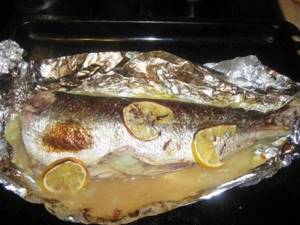
Ingredients:
- 1 kg of fish;
- 1 large lemon;
- 1 sweet and sour apple;
- table salt and spices for fish.
Preparation:
- Carefully cut up the whitefish - remove all excess from the carcass and rinse with cold water. Wipe dry on all sides with paper towels.
- Wash the lemon with a brush. Cut into two parts. Squeeze the juice from one half and brush the fish on all sides. Cover the white fish with salt and spices.
- Cut the other half of the citrus into thin pieces. Also chop the apple along with the skin. Place fruit slices inside.
- Wrap the carcass in foil.
Bake the whitefish in the oven at 170 – 180°C for a little over half an hour. Spinach and sorrel go well with it.
How to use whitefish
Whitefish is highly valued for its taste; its meat is white, tender and fatty. In Russian stores you can buy salted or frozen fish. Fresh white fish is rarely sold - due to its fat content, it quickly deteriorates and is practically unsuitable for transportation over long distances.
It is better to eat whitefish salted, boiled, baked or stewed - this is better for digestion. But you can cook anything from this fish, incl. balyk, which, due to the fat content of the whitefish meat, turns out very well.
Those who do not adhere to food restrictions will enjoy fried white fish. It cooks quickly, it is important not to overcook it in the frying pan so that a hard crust does not form on the fillet.
Many people refuse boiled fish because they believe that its taste is inferior to fried fish. But, as noted above, boiled fish is better tolerated by the gastrointestinal tract, so we’ll give you a good recipe. Boil in advance a broth of celery, parsley, leek, onion (3 onions), allspice, bay leaf, put the fish in it, boil until tender, remove, cut it into slices (by the way, northern white fish fillet is distinguished by the fact that it is easily divided onto plates), cover with herbs, boiled potatoes or rice. Pickled cucumbers, horseradish, and champignon sauce go well with boiled white fish.
Whitefish is baked in the usual way: cut the fish crosswise into several pieces, put it in a mold, put potatoes on top of it, and add grated carrots if desired. Pour cream whipped with milk, seasoned with salt and spices, and eggs over the fish and potatoes. Bake whitefish for no more than 20 minutes. Instead of potatoes, you can use savoy cabbage or broccoli in this recipe. For those who do not limit themselves or follow a diet, you can sprinkle the fish with grated cheese before putting the pan in the oven.
Fish fried in a frying pan
Ingredients:
- 600 g of whitefish;
- 70 ml quality olive oil;
- 50 ml classic soy sauce;
- 100 g wheat flour;
- a mixture of ground pepper, coriander, dried paprika and salt.
Preparation:
- Remove scales from the fish carcass. Rinse well and cut into portions.
- In a separate bowl, mix soy sauce and all the stated spices, ground together.
- Pour the resulting marinade over the fish pieces. Leave it like this for 3 – 4 hours.
- Pour the flour onto a flat wide plate. Add coarse salt to it. The amount of this ingredient should be minimal, since the marinade is already quite salty from the soy sauce.
- Bread the white fish slices in flour.
- Place them in a cast iron frying pan with well-heated olive oil. Fry first on one side and then on the other until a beautiful golden brown crust appears.
This way you can cook white fish very quickly and easily. You can complement the resulting dish with any side dish and mild sauces, onions or horseradish.
